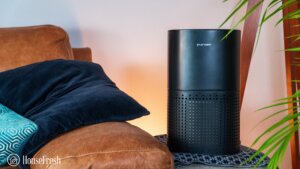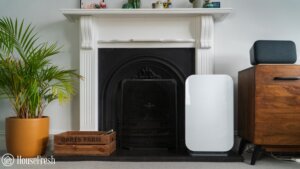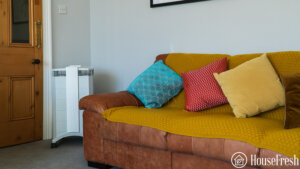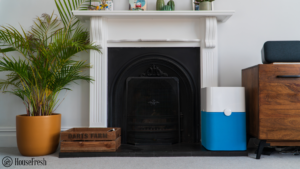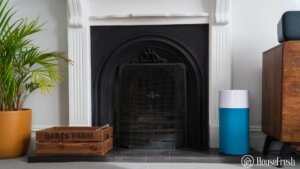Smart Air’s story is one with humble beginnings when founder Thomas Talhelm was a student in Beijing working on his Ph.D. Shocked by the cost of air purifiers, he decided to take matters into his own hands.
By simply strapping a HEPA filter to a fan, he had solved his problem at a fraction of the cost. When he posted his results online, he started to receive positive feedback and questions from folk wanting to do the same. This is when Thomas and his friends decided to start Smart Air.
Bringing no-nonsense air purifiers to their simplest concept and saving us consumers money along the way.
Here at HouseFresh, we pride ourselves on our approach to reviewing products. Open, honest, and unbiased. We can do this as we buy every product we review and put it through real-world tests in our own homes.
| This time we borrowed the Blast Mini from Smart Air under the caveat that we were going to review it with the same guidelines we always do. Open, honest, and unbiased. |
We have designed a test that allows us to probe the capabilities and outputs of every air purifier we review under the exact same conditions, performing the exact same task.
- In our home lab of 728 cubic feet, we light an incense stick to generate particle pollution and VOCs.
- We set up our trusted Purpleair Indoor Sensor with the latest Bosch gas sensor to track levels of PM1ug/m3, PM2.5ug/m3 and PM10ug/m3 and VOCs in the air.

- We switch the air purifier to its highest speed and measure how long it takes to get our room air quality down to PM1 level to 0.
- We use an energy meter to measure precisely how much electricity is used when running the unit at the lowest and highest fan speed settings.
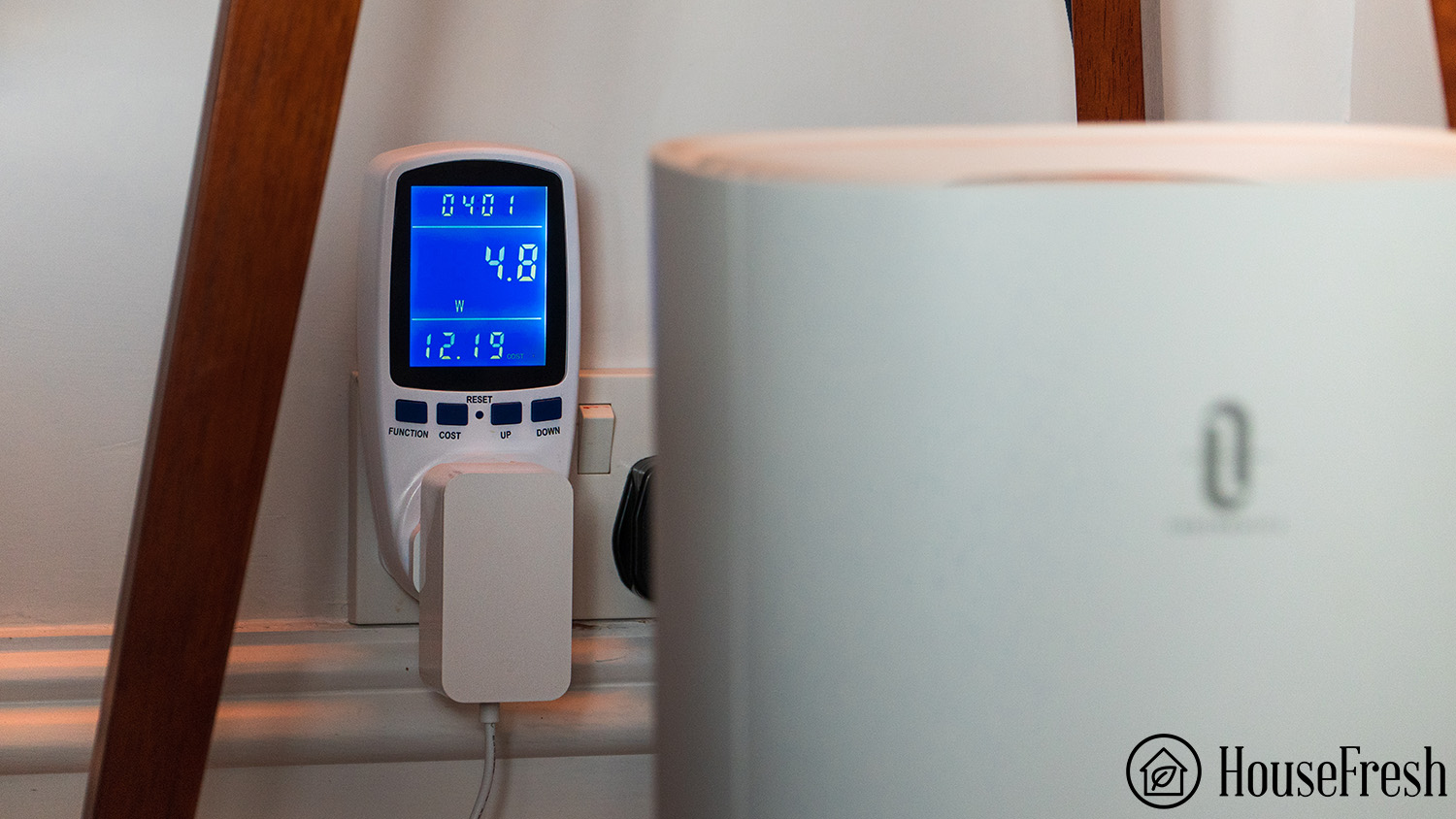
- We track sound levels emitted by the air purifier at different fan speeds with the help of a commercial sound meter.

The lowdown on the Blast Mini

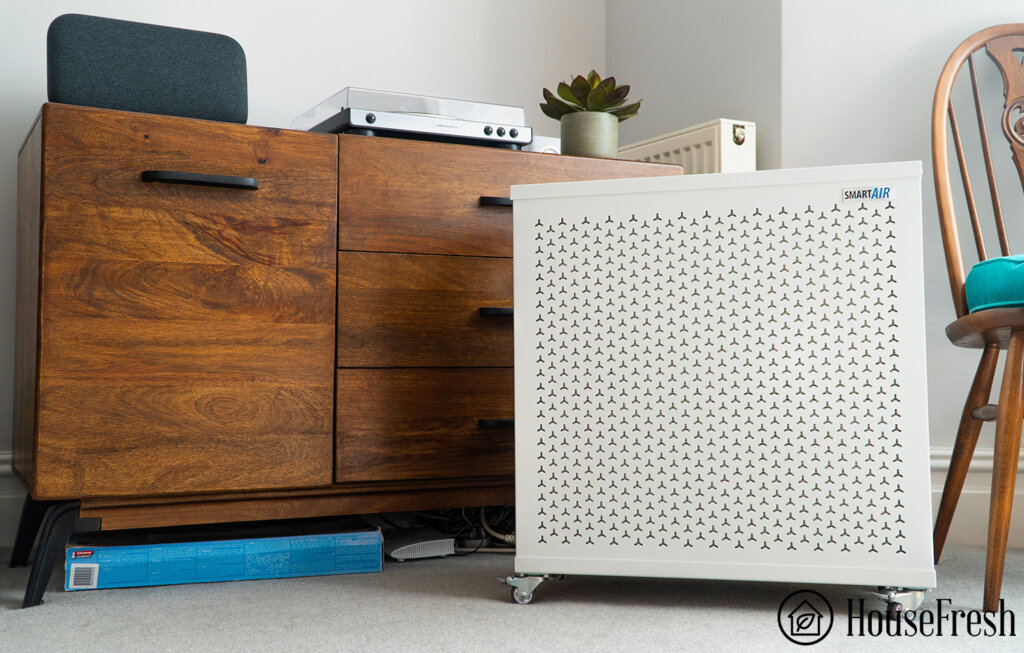
Before we delve into it, I will give you a quick summary in case you’re in a rush.
What we really like
What we think could be better
The specifications
Smart Air has really stepped up the game when it comes to CADR (Clean Air Delivery Rate). The Smart Air Blast Mini shows us what’s possible when you use a high-performance motor in your unit. It outperformed units like the Alen BreatheSmart 75i and the IQAir Healthpro Plus, saving you a couple of hundred dollars on the price.
Unfortunately, the high-performance motor does come with its own cost: the cost of electricity to run it. But we’ll get into that further down.
| HouseFresh Rating: | ★★★★☆ |
| Time to clean our test room: | 17 minutes |
| Air purifier technology: | H13 HEPA Filter |
| Recommended room size: | 915 sq. ft. |
| Clean air delivery rate (CADR): | 435 CFM (740 m³/h) |
| Dimensions (in inches / in cm): | 22.6L x 13W x 24.8H inches (57.5L × 33W × 63H cm) |
| Weight (in pounds / in kg): | 59 lbs (26.8 kg) |
| Noise level (measured from 3 ft. away): | Speed 1: 44.9 dB Speed 2: 51.2 dB Speed 3: 55.8 dB |
| Filter life: | 33 months |
| Electricity consumption (kilowatt-hour): | Standby mode: 0 kWh Speed 1: 51.9 kWh Speed 2: 87.4 kWh Speed 3: 122.7 kWh |
| Estimated running costs (electricity consumption + filter replacements): | $277.70 per year |
| Manufacturer’s warranty: | 1 year |
| Country of manufacture: | China |
The “Mini” that’s not so mini
The Blast Mini is a large metal case on wheels, with a one-dial control

The Smart Air Blast Mini is a departure from the stylings of the Smart Air S (which I loved). As you can see from the pictures, the Blast Mini looks a lot more clinical and robust. You can almost tell by its look that a big fan is hiding beneath the exterior.
I really like the design of the front grill. Smart Air has put some effort into the aesthetics, making this unit more noticeable than others. I particularly like the design of the metal cover:
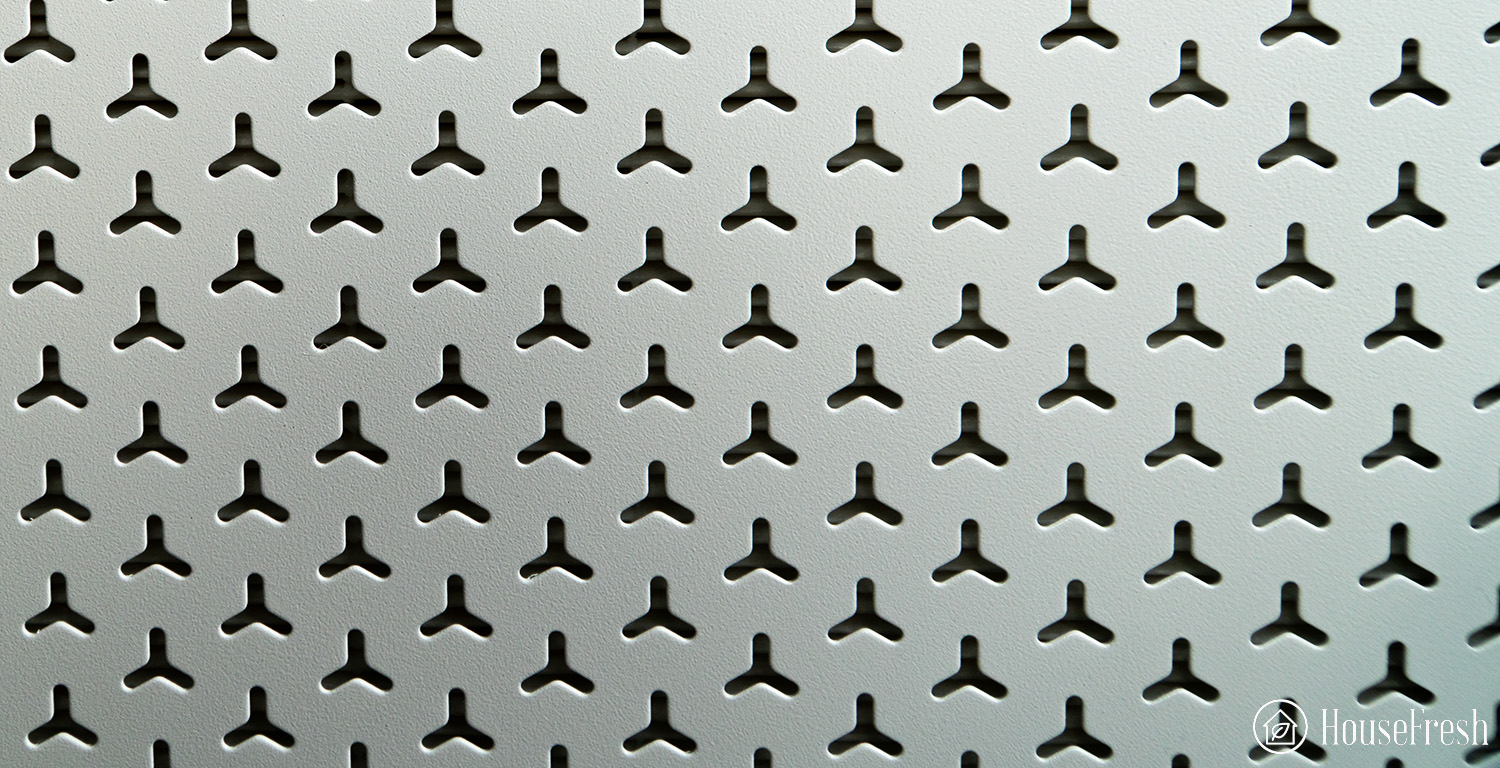
My only real issue is that this unit isn’t mini at all. I even struggled to get it upstairs because it was really heavy.
I suspect the market they’re going for is offices, clinics, waiting rooms, and commercial spaces. But don’t let that stop you, if you have the space in your home, you’ll soon discover that the performance of this unit far outweighs the look.
That said, the size makes sense when you realize how powerful the Blast Mini is. I will go through our performance test results further down in this review, but I can tell you now that this thing is IMPRESSIVE.
My favorite thing about the Blast Mini is the minimalist control panel:
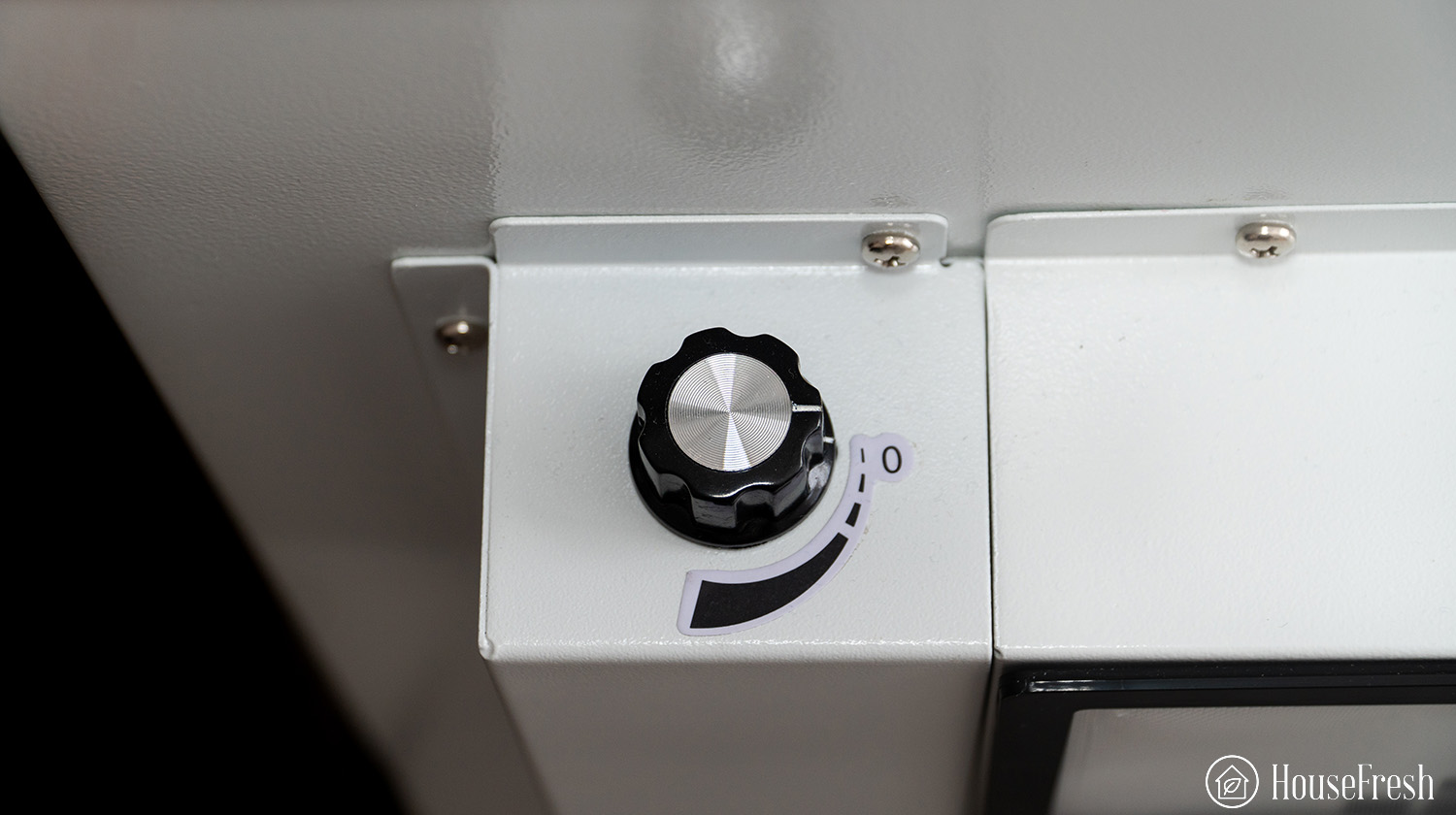
You see that dial in the picture? That’s it… Oh, there are three speeds to choose from. Simply turn the dial to choose which speed you want.
Even a child could operate the Blast Mini, as shown by baby Dylan here 😉
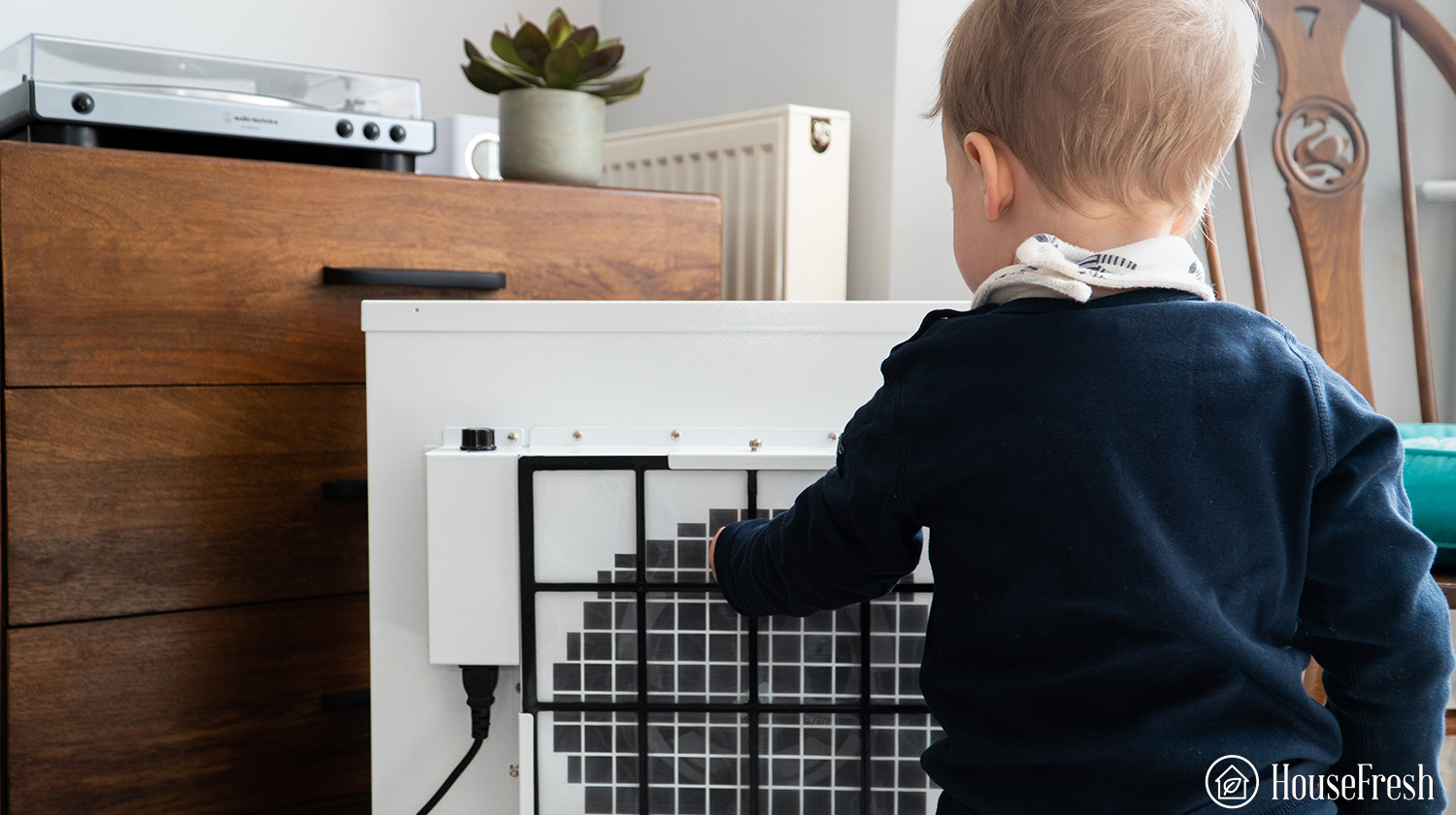
All jokes aside, we loved the added protection at the back of the unit to ensure little hands can’t easily access the filters and fan system.
A large, long-lasting H13 HEPA filter
The filter is the most important part of any air purifier, and the Blast Mini doesn’t disappoint.
The size and strength of the filter will determine how effective the unit is at removing airborne contaminants from your home.
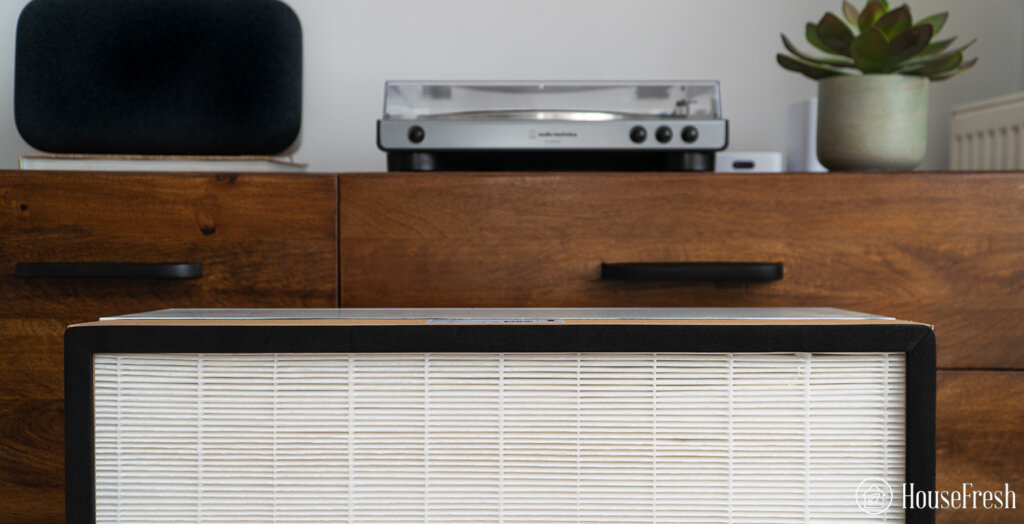
This is where the Blast Mini shows off. Smart Air made it their mission to have the best by testing different filters first, finding the highest performing to match their powerful fan. They decided on a H13 (medical grade) HEPA filter which removes 99.95% of particles like dust, pollen, pet dander, and bacteria to name a few.
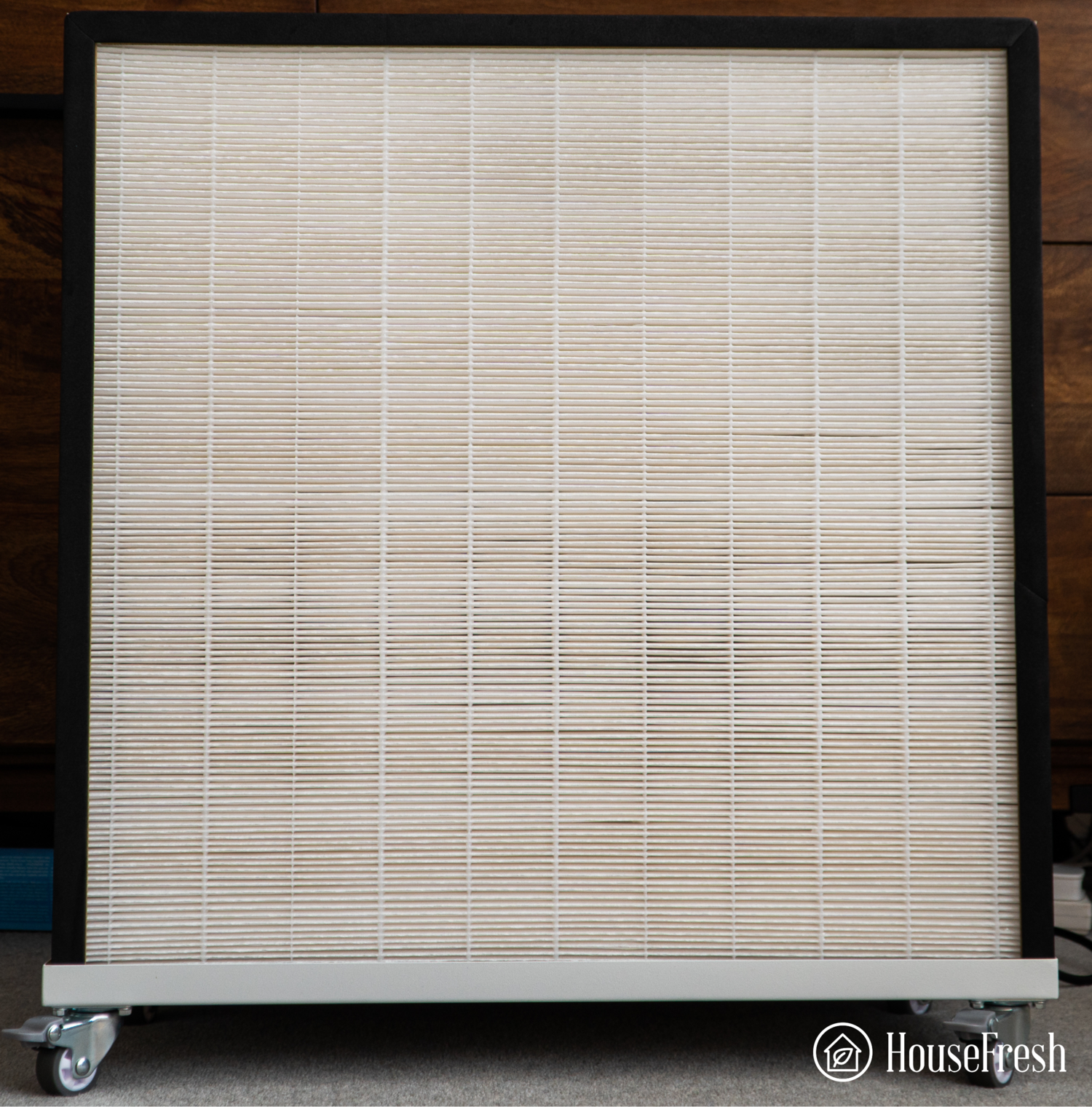
Unlike other air purifiers out there which need their HEPA filters replaced every 6 months, the Blast Mini filter can last you up to 33 months (if you run it for 8 hrs a day), saving you money each year.
Replacing the HEPA filter is pretty easy when the time comes:
- Remove the top panel
- Remove the front panel
- Remove the old filter and replace it with a new one
- Place the front panel
- Place the top panel
On the back of the unit, there’s a pre-filter attached to capture larger particles like dust and hair. This ensures the HEPA can concentrate on smaller particles, prolonging its lifespan. You can remove the pre-filter with a screwdriver allowing you to clean it with a damp cloth or vacuum cleaner.
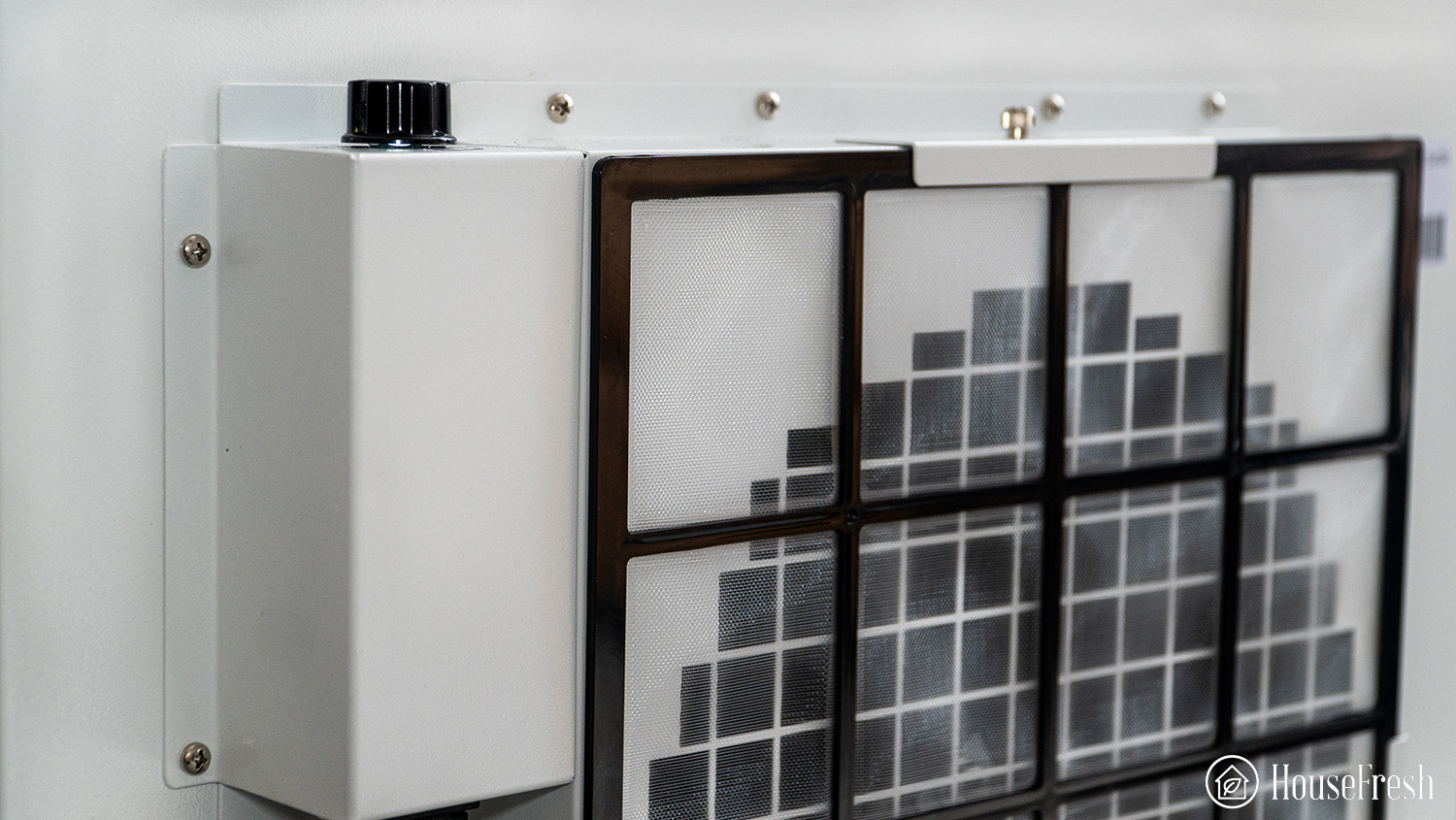
For some reason, Smart Air doesn’t provide an Activated Carbon filter as standard, you have to purchase one as an optional extra. Air purifiers must include an Activated Carbon filter as they rid your air of VOCs (Volatile Organic Compounds) and odors.
Smart Air’s VOC filter is packed full of activated carbon that works tirelessly to remove odors and other VOCs from your room. They say that they don’t include one because some people don’t need it. I’m not convinced. As a consumer, I would rather pay a little extra and have it as standard.
Always remember to remove any packaging from the filters before switching the Blast Mini on. If you don’t, the filter won’t work and you’ll probably start to smell burning plastic, which is the opposite effect you want in an air purifier.
The Blast Mini cleared our test room in 17 minutes
Now we’ve come to the good part, how this unit actually performs in a real-world setting. If you go onto Smart Air’s YouTube channel, you’ll see videos of them testing performance in translucent domes. We don’t have translucent domes and we guess you don’t either.
So we tested the Blast Mini in an actual room to see how fast it can clear our space of airborne pollutants. The space in question is our 705 cubic ft office which we contaminated with incense smoke before turning the Blast Air on full speed.
We monitored each stage of our test using our indoor sensor from Purpleair to provide us updates on PM1.0ug/m3, PM2.5ug/m3, and PM10.0 ug/m3.
Here’s what we found:
As you can see from the graph, the Blast Mini took an amazing 17 minutes to clear our room. That is a fantastic result and one of the best we’ve tested coming in only 2 minutes behind the Levoit Core 600S.
Let’s put that into perspective by comparing it to the top 10 best-performing units in our tests:
Because of the size and power of the fan in this unit, you can’t expect it to be “whisper” quiet, but it’s by no means loud. At its lowest speed, you will hear the hum of the motor at 36 dB then as you crank it up, it will reach 49 dB which is about the sound of a conversation – pretty outstanding considering the average decibels at the highest speed across all the units we’ve tested sits at 64 dB.
Here is how the Blast Mini compares against units with a similar air cleaning performance:
I know sound is subjective, so it is worth listening to the noise generated by the Blast Mini with your own ears to decide if it is too noisy for you:
The cost to run a Smart Air Blast Mini: $277.70 per year
1. Electricity costs = $137.71
When choosing the right air purifier for your home, there are a few more things to consider past the size of your space and your taste in design. You need to think about how much it will cost to run, especially with ever-rising electricity prices worldwide.
The Blast Mini isn’t the most efficient air purifier on the market. We clocked its highest usage as 130.9 watts which is quite substantial. But, that’s on its highest fan speed, which as we’ve seen, doesn’t need to be on for long periods of time.
It’s recommended that you keep an air purifier on for eight hours per day. It would be pointless and wasteful to keep the Blast Mini on full for that long. On its lowest setting, this unit will use around 64 watts, which is still a lot compared to the Levoit Core 600S (6.2 watts).
We used the Department of Energy’s appliance energy calculator to work out the running costs of the Blast Mini in the United States, and the figure came up to $137.71 per year, that’s 37 cents a day.
2. Filter costs = $139.99
Another cost to consider is replacing the filters. The filter is the most important part of your air purifier, without it you’ve just got a fan in a box circulating polluted air. As HEPA filters work by trapping these pollutants, over time they become full and less effective. That’s why they need replacing.
Smart Air has manufactured HEPA filters that last longer than most. Most filters in air purifiers last for around 6 months, but the Blast Mini’s filters can last up to 33 months. This saves big time on the overall running costs.
The downside is the fact that, if you need it (we recommend that you do), you’ll have to purchase an Activated Carbon filter separately. This is where the costs start to add up.
Our calculation is based on running the Blast Mini at full speed all day, every day with only the HEPA filter, having to change it every year.
Bottom line: Should you get a Blast Mini?
An excellent air purifier with powerful air cleaning performance for those looking to buy for life
I really like what Smart Air is trying to achieve with the Blast Mini. It’s easy to operate and performed incredibly well in our performance test. It’s built to last,, and the wheels make it easier to move around, even if it’s heavy.
I can see this unit placed in an office or commercial space, but I can’t see it sitting in a home (at least not my home). Compared to other units it’s expensive to run and the fact that an Activated Carbon filter costs extra bugs me.
But, you just can’t argue with its performance.

If you want a hardworking unit and aren’t hung up on smart features, the Blast Mini might just be the right unit for you. Before you click that button, check out some of our other reviews, you might find something else that suits you better.
SOURCES
We calculated the monthly energy consumption costs with the help of the Department of Energy’s appliance energy calculator. We calculated yearly costs associated with running Smart Air’s Blast Mini 24 hours a day for 365 days. We chose to run this calculation utilizing the US average utility rate, which is $0.12/kWh.
Last update on 2024-04-22 / Affiliate links / Images from Amazon Product Advertising API


